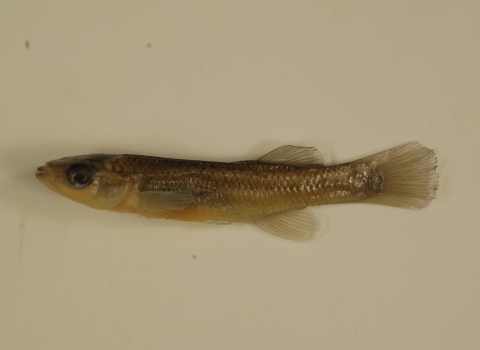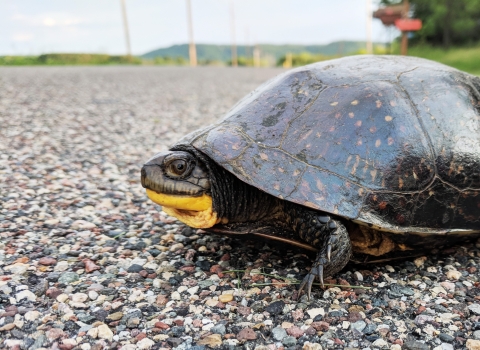The U.S. Fish and Wildlife Service (Service) is awarding $37.2 million in grants to 20 states to support conservation planning and acquisition of vital habitat for threatened and endangered species across the nation. The grants, awarded through the Cooperative Endangered Species Conservation Fund (CESCF), will benefit numerous species ranging from the coastal California gnatcatcher to the Karner blue butterfly. For a complete list of the 2015 grant awards, see www.fws.gov/endangered/grants/index.html.
“Private landowners and natural resource managers play a vital role in conserving our nation’s most imperiled wildlife,” said Service Director Dan Ashe. “By cultivating partnerships between federal, state and local governments, private organizations and individuals, we can establish creative and effective solutions to some of the greatest conservation challenges of our time. These grants are one of many tools available under the Endangered Species Act, and we look forward to providing continued guidance and support for these programs.”
Authorized under Section 6 of the Endangered Species Act (ESA), these competitive grants enable states to work with private landowners, conservation groups and other government agencies to initiate conservation planning efforts and acquire or protect habitat for the conservation of threatened and endangered species.
The grants are funded in part by the Land and Water Conservation Fund, which was established by Congress in 1964. The fund promotes access to outdoor recreation resources for present and future generations and provides money to federal, state and local governments to purchase land, water and wetlands for the benefit of all Americans. For the past 50 years, the fund has supported more than 40,000 conservation and outdoor recreation projects nationwide. Without action from Congress, authorization for the program will expire in September. President Obama has proposed to fully and permanently fund the program.
“These grants enable the U.S. Fish and Wildlife Service to tap into the considerable capacity of the state fish and wildlife agencies and their partners to advance the stewardship of our nation's fish and wildlife resources,” said Larry Voyles, president of the Association of Fish and Wildlife Agencies and director of the Arizona Game and Fish Department. “The states’ proactive, science-based conservation programs and partnerships to restore vital habitats are more effective and less costly to American taxpayers than an emergency-room approach to save species in peril.”
CESCF grant funding is provided through three programs that advance creative partnerships for the recovery of imperiled species: the Habitat Conservation Planning Assistance Grants Program, Habitat Conservation Plan Land Acquisition Grants Program, and Recovery Land Acquisition Grants Program.
The Habitat Conservation Planning Assistance Grants Program provides grants to states and territories to support the development of Habitat Conservation Plans (HCPs) through funding of baseline surveys and inventories, document preparation, outreach and similar planning activities. HCPs are agreements between the Service and private landowners, states or counties that allow certain activities to take place that may impact one or more ESA-listed species. In return, landowners agree to conservation measures designed to avoid, minimize and mitigate the impact of those actions.
This year, the program will allocate approximately $4.7 million in grants. Under one such grant, the state of Florida will receive $750,000 to complete a statewide HCP for Florida beaches. The goal of this HCP is to allow ongoing beach structure structure
Something temporarily or permanently constructed, built, or placed; and constructed of natural or manufactured parts including, but not limited to, a building, shed, cabin, porch, bridge, walkway, stair steps, sign, landing, platform, dock, rack, fence, telecommunication device, antennae, fish cleaning table, satellite dish/mount, or well head.
Learn more about structure protection measures while limiting and mitigating the adverse effects to nesting loggerhead, Kemp’s ridley, leatherback, green and hawksbill sea turtles, five beach mouse subspecies, and shorebirds, including wintering piping plovers.
Under the HCP Land Acquisition Grants Program, the Service provides grants to states or territories for land acquisitions that complement the conservation objectives of approved HCPs.
Nearly $20.3 million will be allocated under this program in 2015. For example, Washington state will receive $2 million to support the permanent protection of up to 1,014 acres of habitat for federally listed species including bull trout, northern spotted owl, Canada lynx and gray wolf. Acquisition of this land by the state will improve connectivity for 60 species of terrestrial vertebrates, including wolverine, marten and Pacific giant salamander, and enhance the effectiveness of the new fish and wildlife crossing structures on the adjacent I-90 freeway.
The Recovery Land Acquisition Grants Program provides funds to states and territories to acquire habitat for endangered and threatened species with approved recovery plans. Habitat acquisition to secure long-term protection often is an essential element of a comprehensive recovery effort for a listed species.
One of this year’s grants, which total $12.2 million, will provide $500,000 to New Jersey for the acquisition of up to 48 acres in Morris County to protect critical habitat for the federally listed Indiana bat. The property contains one of only two Indiana bat hibernacula within the New Jersey Highlands.
The ESA provides a critical safety net for America’s native fish, wildlife and plants. The Service is working to actively engage conservation partners and the public in the search for improved and innovative ways to conserve and recover imperiled species. To learn more about the Ecological Services Program, visit www.fws.gov/endangered.



